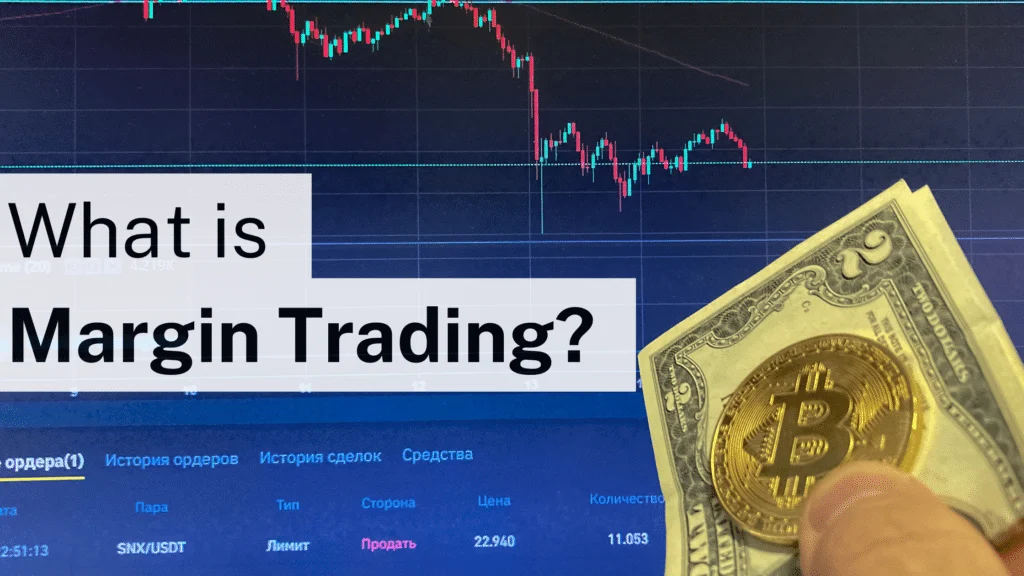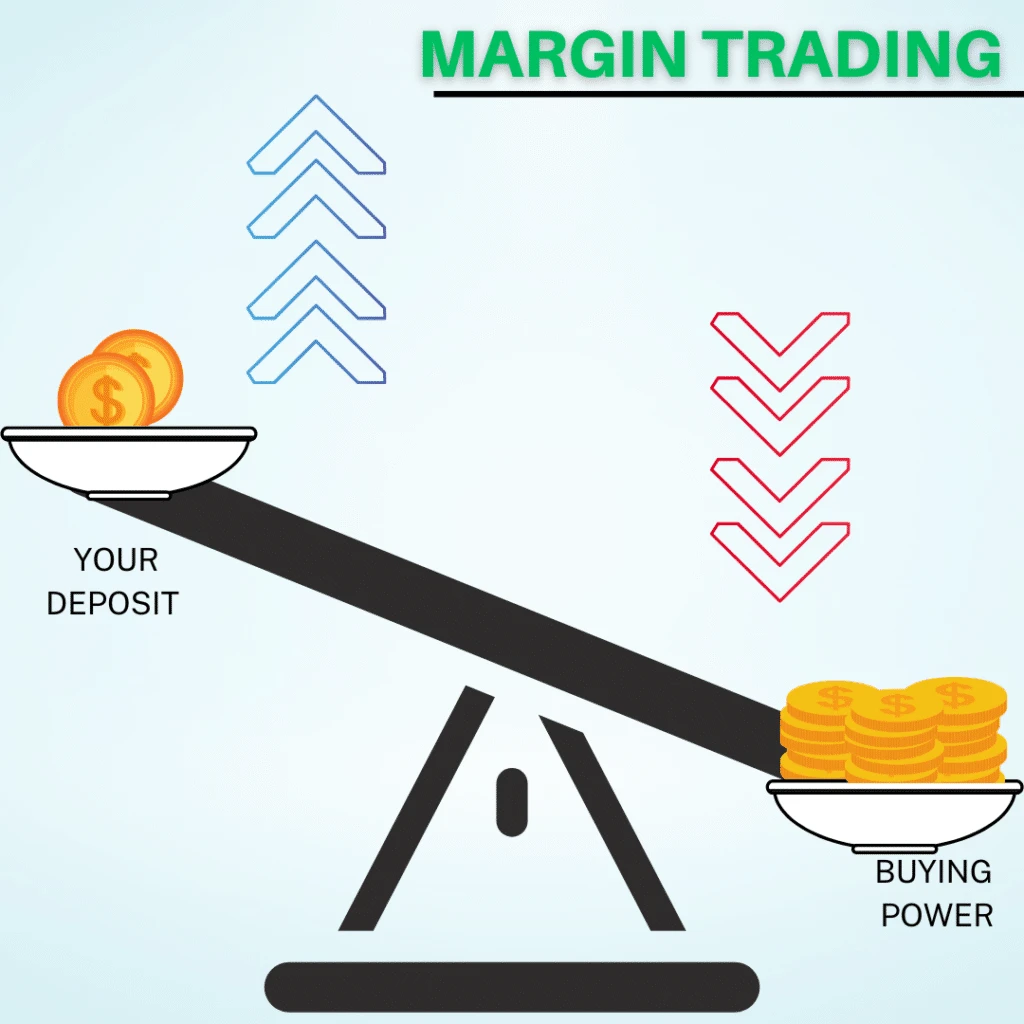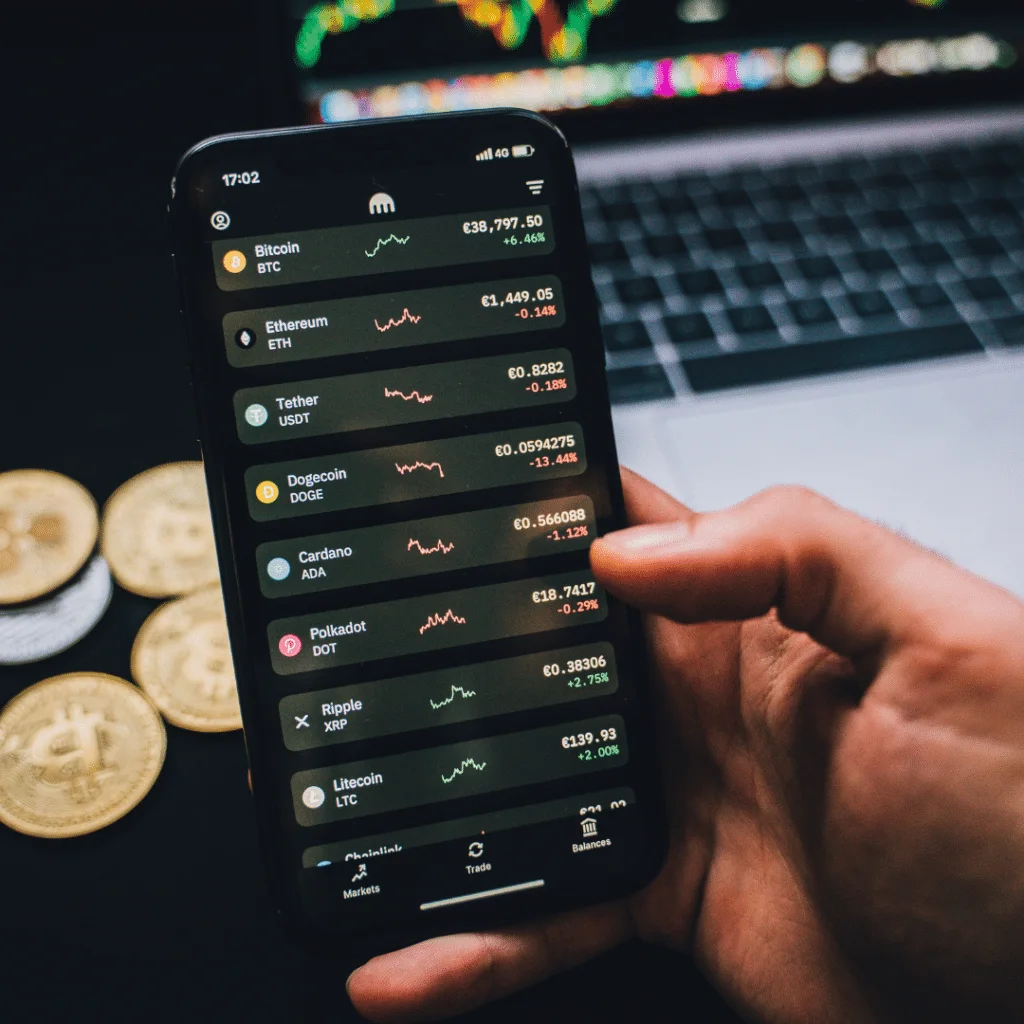What is Margin Trading?
Margin trading is the practice of borrowing money from a broker or exchange to trade cryptocurrency or securities. It is also known as trading on margin or leverage trading. Margin trading is different from traditional trading because traders are using borrowed money.
The long definition
Margin trading refers to the practice of using borrowed money to trade. It is commonly done through margin accounts, which allow traders to borrow money.
In a regular account, you can only purchase cryptocurrency with the money you put in. A margin account allows traders to borrow money from a broker to purchase cryptocurrency. This increases their buying power, allowing them to make larger investments with less of their own money.
The money in the margin account is the margin. It is usually a percentage of the total value of the crypto being traded or the amount the broker is willing to lend. This means the trader is taking on additional risk by borrowing money.
As such, if the price of the cryptocurrency falls, the trader may be required to put up more money to cover the margin or the broker may close the position by selling the cryptocurrency to pay back what was borrowed. This means margin traders could lose all his or her money if prices fall too low.

Types of Margin Trading
There are two main types of margin trading, intraday, and overnight.
- Intraday margin trading is when the position is opened and closed within the same trading day.
- Overnight margin trading is when the position is opened and held for longer than one day.
Understanding Margin and Leverage
The Margin is the amount of money that you must have in your account to open a position, which is the crypto you’re buying. This is typically a percentage of the total value of the cryptocurrency being traded.
So, if you had $10,000 in a margin account and the exchange had a margin requirement of 25%, you could buy up to $40,000.
Your $10,000 would be the 25% and you would be borrowing the other 75% ($30,000 more) from the exchange.
Leverage is using borrowed money to make larger investments with less of your own money. So, in the example above, you are leveraging $30,000 of the exchange’s money.
Leverage can be beneficial for traders because it allows them to make larger investments with less capital. However, it also increases the risk of losses if the price of the cryptocurrency drops below the amount the trader borrowed.

Strategies for Margin Trading
Traders can use strategies like these to increase their chances of success when margin trading:
- Decide how much risk they can tolerate and stay below that amount.
- Hedge positions, which means offsetting losses by taking an opposite position in a related cryptocurrency. For example, if historical data indicates that Polkadot typically goes up when Ethereum goes down, you can purchase Polkadot to hedge your position on Ethereum.
- Use stop losses which means the cryptocurrency, or a portion of the holdings, will automatically be sold if it hits a certain price.
- Use limit orders which means setting a desired price at which your trades are executed.
- Diversify, which basically means not putting all your money into one cryptocurrency.
Understanding Your Risk Tolerance
This comes under the category of emotions. You may feel excited about making a lot of money, but how will you feel if you lose some or all your money?
One strategy is to imagine how your future self will react if you lose big. Obviously, if you would be devastated your tolerance for risk may be low, and should be a warning to be very careful.
Benefits of Margin Trading
Margin trading can benefit traders because:
- It allows traders to increase their buying power with less of their own money.
- It helps traders who may not have enough capital to buy a large enough position in a particular crypto asset or security.
- It allows traders to take on more risk, which can lead to higher profits.
- It can be used to hedge positions, allowing traders to limit their losses if the price of the security moves against them.

Risks of Margin Trading
Margin trading can involve a high degree of risk.
If a price moves against a trade, the trader may be required to add more of their own money to cover the margin – the amount borrowed – or the broker may close the position and pay itself back with the money it gets from the sale.
This can lead to significant losses.
Additionally, traders using margin accounts may be subject to margin calls. A margin call requires the trader to repay the amount borrowed right away or risk being liquidated.
Factors Affecting Margin Trading
Consider these factors:
- The size of the margin. How much is borrowed and if the trader can repay the borrowed money if the price falls
- The volatility of the cryptocurrency. Trying to determine how changeable the price of the cryptocurrency could be based on current market conditions and other factors
- The liquidity of the market. Whether there are enough buyers willing to step in and buy the cryptocurrency if prices fall and the trader wants to exit his or her position.
